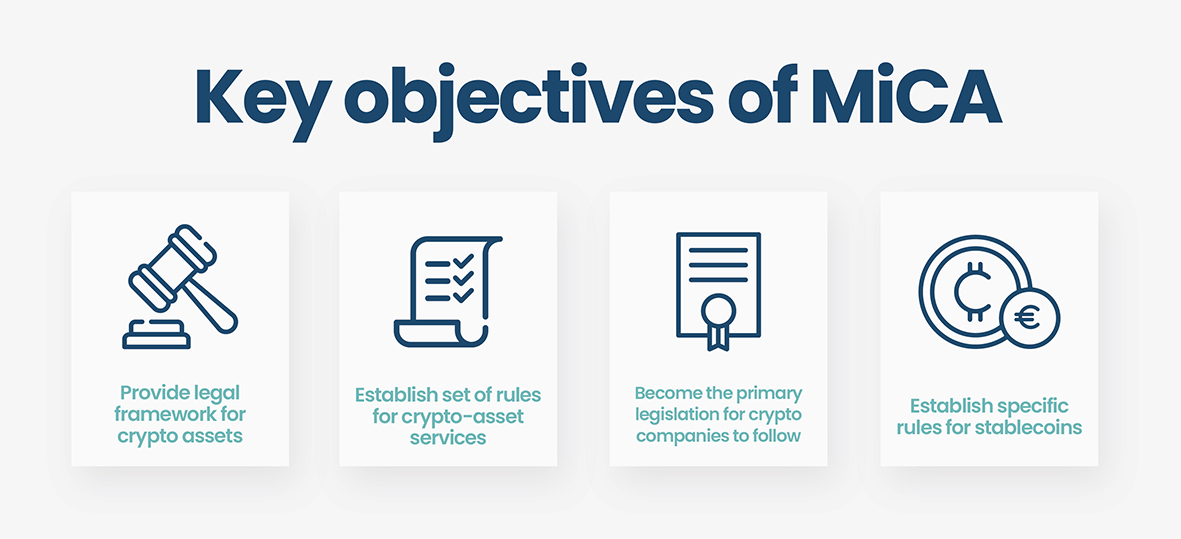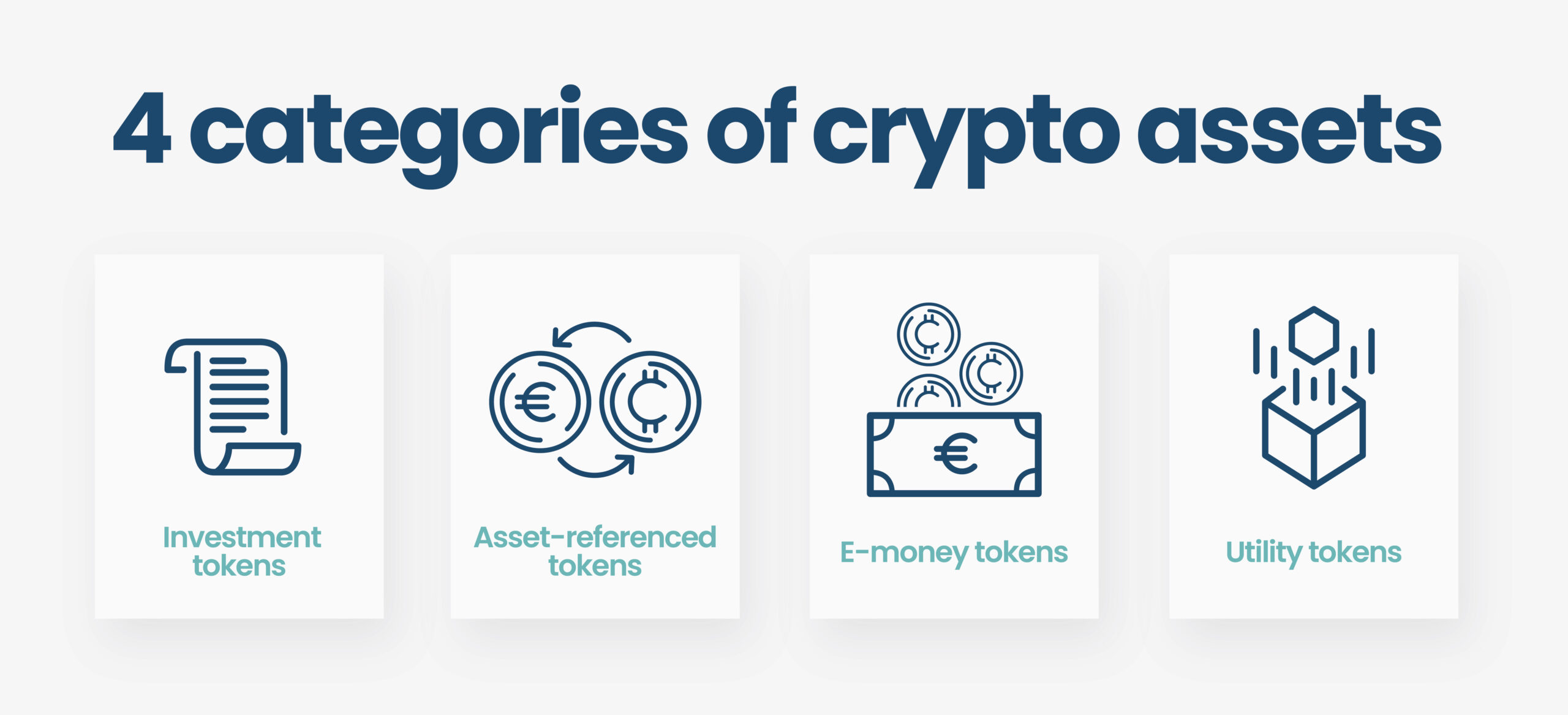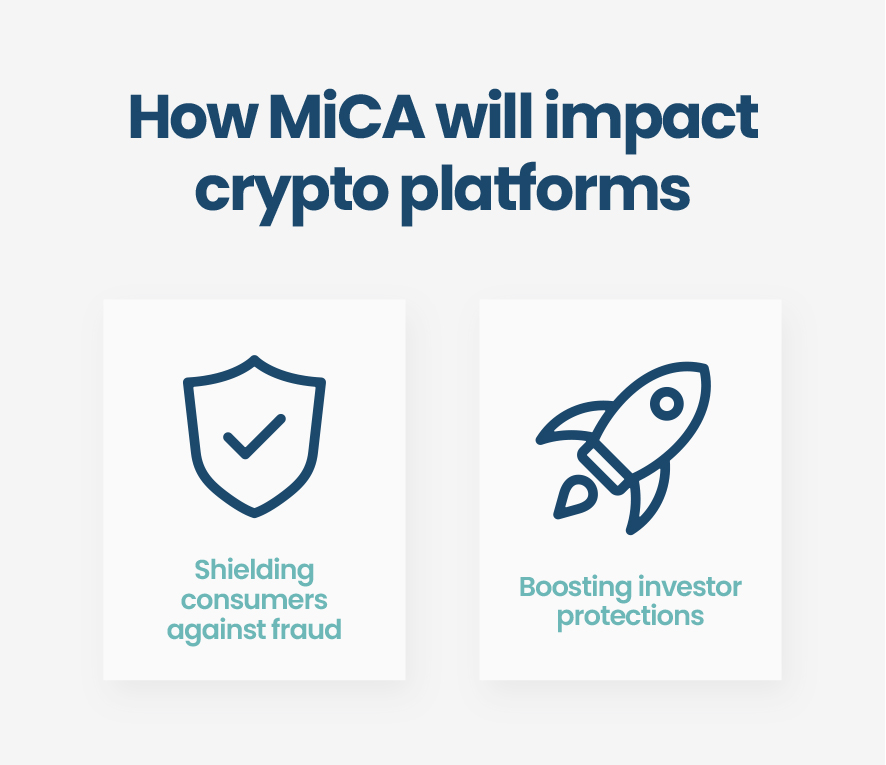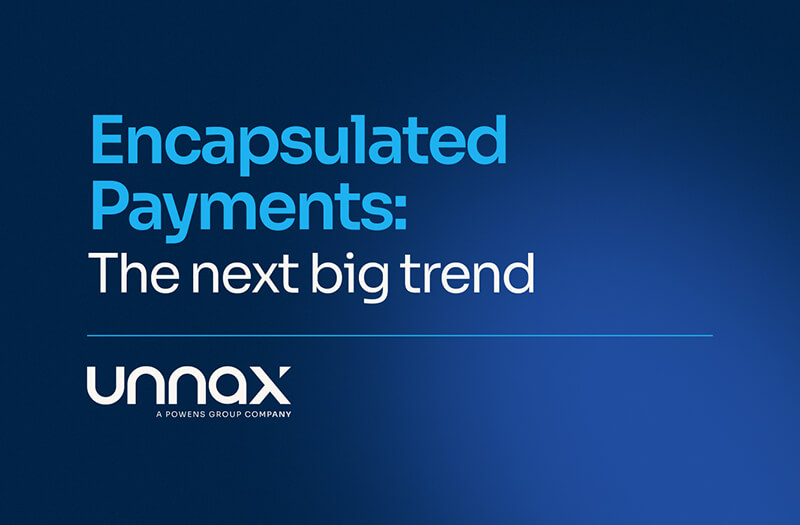The future of crypto assets in the European Union is shifting.
Financial regulators around the globe have been seeking ways to better regulate crypto assets. This task is highly difficult given the widely decentralized nature of the industry.
Yet, EU-based regulators are making major strides toward publishing substantial crypto-asset legislation.
The European Union is in the final stages of officiating a new piece of legislation called the Markets in Crypto-Assets Regulation, or MiCA for short. As this regulation transitions into the final phase of negotiation, crypto platforms operating in Spain and the wider EU region must have a clear understanding of how this legislation affects them.
In this article, we discuss what MiCA is, what its objectives are, and what crypto platforms can expect from the legislation in terms of regulatory compliance.
As the publication and final signing of MiCA are ongoing, this article will be updated as more information becomes available to the public. So you can rest assured that what you read here is the most up-to-date information.
Without further ado, let’s jump into the meaning of MiCA and what it applies to.
Read straight through, or jump to the section you want to read:
- What is MiCA?
- The main objectives of MiCA
- To what extent does MiCA affect crypto platforms?
- Timeframe of MiCA implementation
What is MiCA?
The European Markets in Crypto-Assets Regulation (MiCA) is one of the most significant and in-depth pieces of cryptocurrency regulation to be published.
MiCA was first proposed in September 2020 as part of a larger digital finance package that aimed to help bolster the competitiveness of the EU financial sector, as well as give consumers greater access to innovative products. As of June 2022, the European Union has agreed to a provisional version of MiCA.
However, for MiCA to be fully implemented and enforced, it must first be agreed upon by both the EU Council and the European Parliament. According to a November 2022 report from Coindesk, EU lawmakers have postponed final MiCA voting until April 2023, bumping the deadline backward from December 2022.
The Markets in Crypto-Assets framework was published in October here. Before the legislation can be officiated, it must first be formally signed by the proper EU authorities.
Once the legislation is official, crypto companies will have between 12 and 18 months to comply.
The main objectives of MiCA

Along with striving to boost EU financial competitiveness and improve consumer access to innovative products, MiCA is designed to provide a legal framework for crypto assets.
The legislation is centered around four key objectives:
1. To provide a legal framework and legal certainty regarding crypto assets not covered by current EU financial legislation.
2. To establish a regional standard and uniform set of rules for EU-based crypto-asset service providers and issuers to abide by.
3. To replace existing legal frameworks that apply to crypto assets, making MiCA the primary legislation for crypto companies to follow
4. To establish specific rules surrounding stablecoins
Furthermore, the legislation aims to provide a clearer definition and categorization for crypto assets. It takes a particularly close look at how stablecoins are used, issued, and regulated.
MiCA separates crypto assets into four categories:

1. Investment tokens: Investment tokens provide a digital representation of ownership rights. They can also give voting and decision-making rights to those who hold and own them. MiCA applies to investment tokens that do not qualify as financial instruments.
2. Asset-referenced tokens: Asset-referenced tokens (ARTs) reference other fiat currencies. The key characterizing factor of an asset-referenced token is that it maintains stability by referencing multiple different fiat currencies. Alternatively, an asset-referenced token can also reference several commodities or crypto assets.
3. E-money tokens: E-money tokens (EMTs) are similar to asset-referenced tokens, except they only reference one, single fiat currency. Both e-money and asset-referenced tokens take aim at stablecoins, intending to better define these types of tokens and ensure they are backed by reserves with the right protections to prevent insolvency.
4. Utility tokens: Utility tokens are crypto assets that provide digital access to goods and services. They are only accepted by the issuer of the token. This definition of utility tokens strives to bring less well-defined crypto assets like NFTs into the regulatory fold. However, many NFTs will still fall outside the scope of MiCA.
The MiCA legislation also covers other crypto assets that cannot be categorized into one of these four labels but also cannot be qualified as a financial instrument.
To what extent does MiCA affect crypto platforms?

In terms of how MiCA will impact crypto platforms, the extent of the regulatory reach is predominantly focused on boosting consumer and investor protections.
EU regulators are particularly concerned with ensuring consumers are shielded against fraud and deceptive platform or issuer practices.
This is an especially relevant topic today, considering the collapse of the cryptocurrency exchange FTX that resulted in between $1B to $2B in missing investor funds. While the cause of this loss of funds is still being investigated, Bahamian FTX liquidators are quoted as stating that “serious fraud and mismanagement” were involved in the scandal.
A key factor for crypto platforms to consider is how they qualify under MiCA’s definition of a crypto-asset service provider, or CASP for short. If the crypto platform is also the issuer of the asset, it will be subject to more intensive regulation than exchanges that simply facilitate trading.
However, exchanges that do not issue crypto assets must still provide whitepapers to consumers that cover the potential risks of a crypto asset. The exchange can be held liable for providing consumers with misleading documents, educational information, or other content.
Both exchanges and issuers must bear liability for hacks and other preventable failures as well.
Obligations for issuers of crypto assets under MiCA
Many new obligations may be required of CASPs under MiCA, possibly including, but not limited to, the following:
– Crypto-assets issuers and service providers must be authorized to operate in the EU, and Issuers of asset-referenced tokens (ARTs) will need to have a registered office in the EU.
– The European Banking Authority (EBA) will maintain a public register of non-compliant crypto-asset service providers.
– Issuers must publish a whitepaper. The whitepaper must provide potential customers with technical information, should disclose any potential risks associated with getting an account with their crypto platform, and should specify any transferability restrictions.
– Crypto-asset service providers must protect consumer wallets. They will also be held liable if they lose their investors’ crypto-assets.
– They need to ensure there is no market abuse related to any type of transaction or service, notably, market manipulation and insider dealing.
– They must declare information on their environmental and climate footprint.
– They have to abide by common-sense marketing practices when marketing their crypto-assets.
– They must act “honestly, fairly, and professionally”. This is particularly true in relation to conflict management and upholding security protocols.
Timeframe of MiCA implementation
The current timeframe for MiCA implementation in the EU is uncertain.
As stated earlier, the MiCA deadline has been pushed from December 2022 to February 2023. Once this vote occurs and the legislation is officially signed, crypto companies will likely have between a year to a year and a half to update their compliance models to match the new regulation.
In all likelihood, EU-based crypto companies can expect to begin MiCA implementations in early 2024.
Final thoughts: How Unnax can help meet the challenge of MiCA
As we move closer to the finalization of MiCA, crypto platforms need to consider how they will update their compliance models without disrupting business.
At Unnax, we offer fiat safeguarding services, KYC & AML solutions as well as payment gateways to help crypto platforms meet regulatory challenges. This enables users to keep their finances in fiat money, ensuring that their funds are guaranteed.
Unnax is licensed as an Electronic Money Institution (EMI), enabling the creation and issuance of fiat money accounts and wallets for crypto platforms. This provides crypto platforms with greater overall control and operational flexibility.
Contact us today to learn more about how Unnax can help you prepare for the upcoming final publication of the MiCA regulation.










